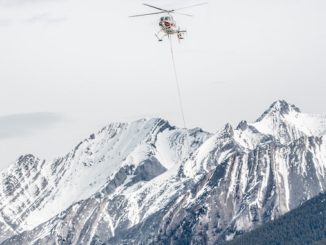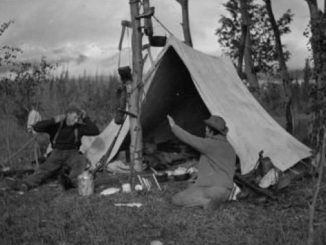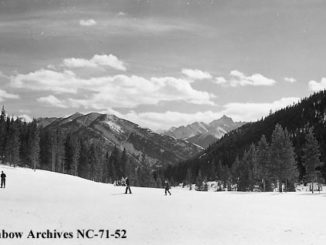Back in early 2015, before the Wild Jobs concept was even an idea, I wrote a story called Rescue Dogs: More Than Man’s Best Friend where I detailed the work of avalanche rescue dogs. For that piece, I connected with Logan Bennett who, at that time, was the President of the now defunct Alberta Avalanche Rescue Dog Association (AARDA) and the lone dog handler on the Snow Safety Team at Sunshine Village. Since that story’s publication, Bennett has been on a whirlwind adventure to become the one and only dog handler within Canada’s national park’s system. Recently, I reconnected with Bennett to profile his new career, meet his new dog Leroy, and share the story of how he earned one of the rarest jobs in the country. Technically speaking, this is the forty-ninth installment bearing the Wild Jobs moniker, but if you include the aforementioned Rescue Dogs piece, this makes it an even fifty. I find it fitting that Bennett was featured prominently in the story that kickstarted the idea for this series and is now, once again, the focal point all these years later.

You went from Sunshine Village to Alberta Parks, and then to Parks Canada. How did that all happen?
I was working down in Pincher Creek with Alberta Parks while I was working at Sunshine for back-t0-back seasons for about three years with the intention of applying for this Parks Canada job. Basically I made a plan to try and check-off all the boxes I knew they were going to ask for. One of the big ones is law enforcement experience and to get that is really hard, so I was quite fortunate to be part of the Park Ranger system, while it existed. I learned tons from the conservation team down there and was just really lucky to get that experience. When there’s only one job like it in the entire country, the bar is set pretty high, so I was trying to do all I could to make myself the best candidate possible.
So your role with Alberta Parks didn’t involve a dog?
“No, there was no dog while I was working with the Ranger service. I had Ferra out on a few calls, but that was more-so on a contract basis. I taught her to search for spent shell casings, and she did pretty good for us, so she helped with a couple of searches in that regard.”
What additional training did you need to make the jump from Ranger to Warden?
There was a bunch more training required. Because I was a Park Ranger, I didn’t have the same tools or skillset that full-time Conservation Officers have, so I definitely couldn’t transfer over as an experienced office. I had to start from the very beginning with the rest of the Parks Canada recruits. We went away to the RCMP Depot in Regina, which is an experience in itself, but I was really lucky to have that time with the RCMP. We try to squeeze a six-month course into a three-month window, so it was intense and fun, kind of pedal to the metal the whole time as you’re trying to learn as much as possible while you’re there. The end goal is to try and land on your feet as soon as you’re done because you’re sent straight from Depot to your detachment. I was pretty lucky to have as much experience as I had with resource conservation because that helped me a tonne. I just really enjoyed my time with the RCMP and being in such a storied place like that.
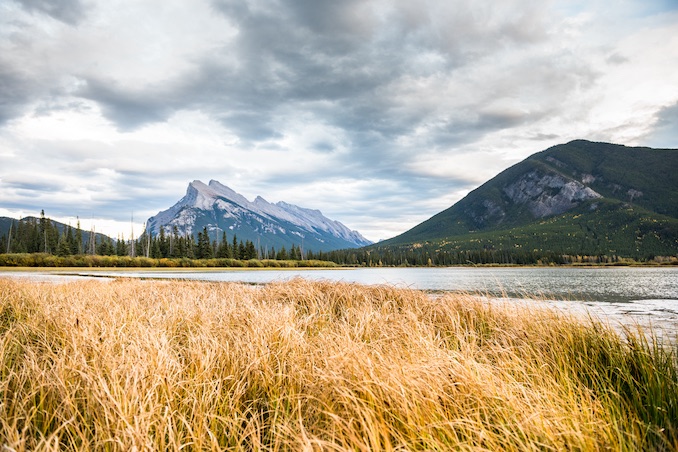
So I am assuming then that the training at RCMP Depot wasn’t with a dog?
“No, that was just for me and the other recruits. I was deployed back to Banff for nearly a year before I went away again to the RCMP Kennels to learn how to be a dog handler. I had almost a year on the job as a Warden just to get used to how we do things with Parks Canada because it’s different legislation than Alberta Parks. Kennels is where the real work started for me. I had been a dog handler for ten years in the avalanche world, but it’s a difficult thing to take an avy dog handler and try to turn them into a police dog handler because of the tracking. That was a pretty big learning curve for me, but I had really great instructors that put a lot of work into us to try and get us to the mark. It took some really hard learning. I was at the Kennels for eight months. It was roughly three months with my first dog, Knox, who was awesome but just not a strong enough tracker, so he was washed out of the program. Then I got Kitt, who I took pretty much all the way to the end. We were about a week away from graduating and we just kept stumbling at the end and we just couldn’t finish it, so the head instructor said that they’d have to replace my dog again. I was lucky to get a third shot, which is how I ended up getting Leroy and he took us all the way to the very end. He was just a really great tracker out of the box. When I finally graduated I was just so happy. After putting all that time and effort in, it was just so worth it in the end.”
You are the only dog handler in the Parks Canada system, why is that?
It comes down to a number of things from workload, to cost; it’s very expensive to have a trained dog and handler. I hope, as always, to grow the program and to keep moving forward. I just hope I’m out there doing my best job everyday so that we can continue to prove the efficacy of the program and continue moving it in the right direction. I feel a lot of onus to perform for all of those who have come before me and for hopefully all the dog handlers we have in the future.

Being the only one in your position, I am sure a ‘typical day’ doesn’t exist for you, but what does your day-to-day job look like?
“Well, we have two day-to-days; our winter program and our summer program. In the winter we’re on secondment to the Visitor Safety Team, so I’ll be a forecaster every day. There are a lot of similarities to what I was doing at Sunshine with Snow Safety. Getting up in the morning, attending the forecasting meetings straight away, making a plan and heading out to gather information for your forecast, and then coming back and making the forecast. That would be a normal, super generic day. But for me it’s a little different since I can’t be on every field trip because I’m training the dog, helping the RCMP with their avalanche dogs, and also helping out the civilian contingent, who in turn are also helping me so we can all become better dog handlers across the country. I’m obviously not on my skis as much, jumping on chairlifts or hucking bombs, which I do miss sometimes, but I do get to ski tour more and spend a lot of time with my head in the snow, which keeps me learning and growing as a forecaster.
Then in the summer I’ll be with the Law Enforcement side of things as a general duty Warden, as well as my role as the Warden Service Dog Handler. We clock in when we get in the truck in the morning and start doing our rounds. You know, the usual law enforcement things to ensure everything is all squared away inside the park. Then if there’s a high-risk call or a call where tracking is needed, or if the RCMP need assistance, I’ll turn up with the dog to try and deescalate the situation or try to find the person they need us to find. It’s a super exciting part of the job and I’m really lucky to be able to do both of those roles.
In both seasons we are working on our specialties, the human remains profile and the avalanche profile, which means a lot of work in the water, on the boat, along rivers, working in and from helicopters – it’s pretty intense with a steep learning curve. That first year was just like ‘whoa, there’s a lot going on here’. You’re just everywhere all at once and you need a dog that’s pretty good at everything. It’s a big balancing act between completing your general duties and general forecasting with the other specialized roles that we find ourselves in. It’s always new, it’s always exciting, and we’re always learning.”
What is one of the most challenging aspects of your career?
The breadth of the work. On any given day we could literally be swimming down a river searching for someone or off on a 20km jaunt into the alpine looking for someone, or working with the RCMP with a really high risk call. Just the variability of being as good as you can be with all of the different profiles can get a little bit trying for me as a young handler. We’ve done good work, but can we be better? Totally, we definitely could get better and we will. We just have to keep pushing.
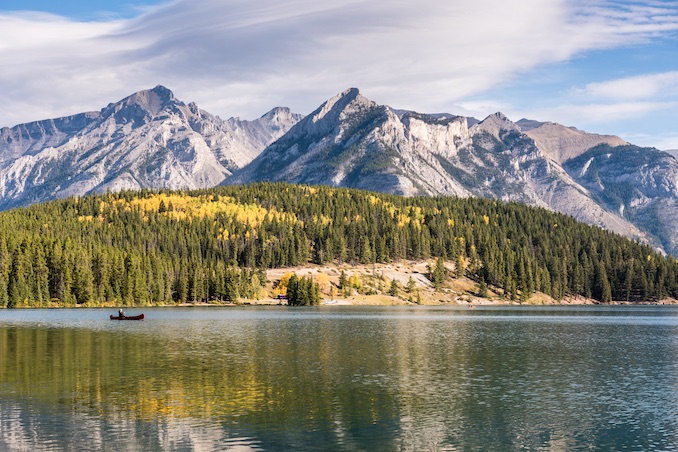
What is the best part of your job?
The best parts for me are working Leroy and seeing him succeed. When he succeeds it’s such a great feeling and it’s so awesome that we’re actually doing the work. We’re tracking, we’re moving fast, and it all just works. It’s really something special.
In a perfect world, how long will Leroy be able to work in his current role? What happens next?
Seven to ten years of age, so probably five to eight years of service on average for a dog. It all depends on the dog and how they’re doing physically. Leroy is four now, so another three to five years would be ideal for him, but we do see a lot injuries and other things that can hinder their performance much earlier than we’d hope. Whenever that day does come to retire Leroy, I’d go back to the RCMP Kennels and train another dog. Career-wise, my goal would be to have three dogs, somewhere in the realm of twenty years of service.

What is one of the most memorable experiences you’ve had while on the job with Leroy?
Tracking the hiker that was lost in the Pipestone Valley. Maybe you read about it, but over nine hours and twenty-two kilometres of tracking and we found her alive. That was massive for us being able to find her with one of the other technicians. We worked really hard for that one and I was just really proud of the three of us involved in that search.
Then you know the water search where we worked with the underwater dive team. They had determined a few areas using sonar that they liked to try and recover the deceased. We brought in Leroy and basically let him drive the boat at that point. Wherever the dog goes, we turn the boat to follow him. He patterns back and forth inside the boat and pinpoints where he wants to go. The spot that Leroy chose from the boat was the exact spot where the dive team located the body. The conditions were really in our favour and the underwater dive team is really good. I’m really proud of that one because it shows the breadth and efficacy of the program and the types of things we are able to do. That was a big ‘whoa, this actually works’ type of a moment for us. Obviously that situation comes with a lot of sadness because we are returning someone to their loved ones and trying to provide some closure to assist with the grieving process.
Is there anything else you’d like to add that we may have missed above?
I just want to thank my family, the RCMP, Parks Canada, and all my friends who have helped, supported, and guided me along on this journey to make this career a reality. Just a huge thank you to all of the people that supported me in being able to do this job.
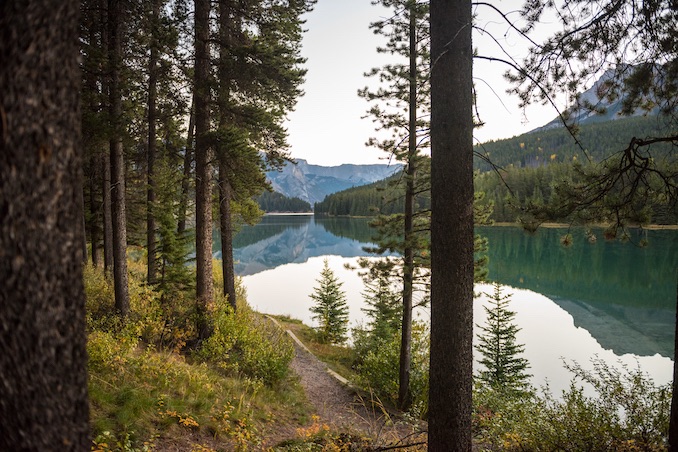
I would like to take this opportunity to thank Logan for his time, honesty, and willingness to provide a glimpse into his job that is truly one of a kind. The work you and Leroy are doing is meaningful and I have no doubt that you’re making those who came before you extremely proud. I would also like to thank Kira Tryon, the Public Relations and Communications Officer in the Banff Field Unit for suggesting Logan as an interview subject. Without all of your behind-the-scenes work, this story wouldn’t have become a reality.
For up-to-date information about Parks Canada please visit their website. You can also connect with them any of their social channels, such as Facebook, Twitter, Instagram, and YouTube. Banff National Park also has their own social media accounts on both Facebook and Twitter.
***
About this column:
Wild Jobs is a running series that focuses on people in outdoor-related professions. It provides a brief snapshot of their career and the duties that it entails. Please see my previous post, Wild Jobs: Canyoning Guide to learn more.


